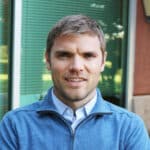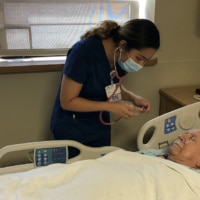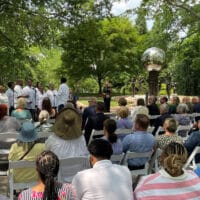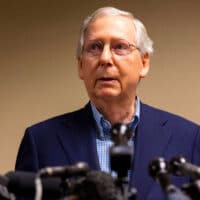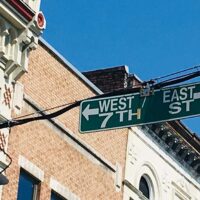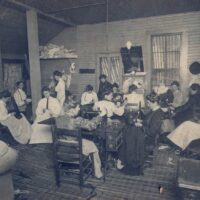On a humid August afternoon in 2020, two caskets ― one silver, one white ― sat by holes in the ground at a small, graveside service in the town of Travelers Rest, South Carolina.
The family had just lost a mom and dad, both to COVID-19.
“They died five days apart,” said Allison Leaver, their daughter who now lives in Maryland with her husband and kids.
When Leaver’s parents died that summer, it was a crushing tragedy. And there was no life insurance or burial policy to help with the expense.
“We just figured we were just going to have to put that on our credit cards and pay it off, and that’s how we were going to deal with that,” Leaver, a public school teacher, said with a laugh of resignation.
But then, in April 2021, the Federal Emergency Management Agency offered to reimburse funeral expenses for COVID victims — up to $9,000, which is roughly the average cost of a funeral. And the assistance was retroactive.
Leaver applied immediately.
“If this horrible thing had to happen, at least we weren’t going to be out the cash for it,” she said.
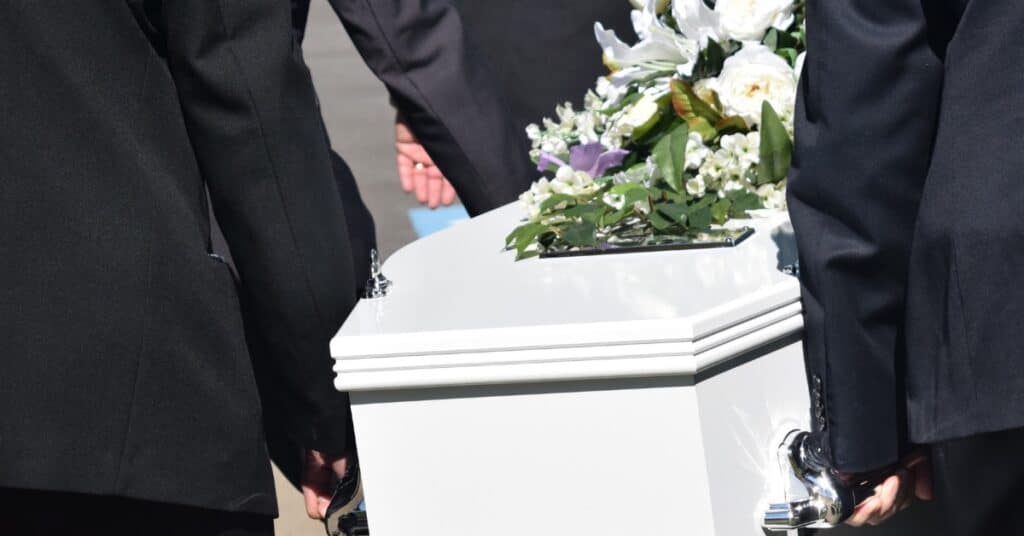
A year into the program, the federal government has paid more than $2 billion to cover funeral costs for people who die of COVID. More than 300,000 families have received reimbursement, averaging $6,500. But fewer than half of eligible families have started applications, and FEMA said there is no limit on the funding available at this time.
- RELATED: A grim milestone in COVID-19 deaths
Many surviving family members have run into challenges or don’t know the money is still available.
FEMA launched a massive call center to manage applications, hiring 4,000 contractors in Denver. Survivors must call to initiate the process, as applications are not accepted online. FEMA received a million calls on the first day, leaving many people waiting on hold.
Once Leaver talked to a representative, she started assembling the death certificates and receipts from the funeral home and cemetery. She uploaded them online — and heard nothing for months.
Eventually, she called and learned that one problem was that the receipts she submitted had different signatures — one was her husband’s, another her sister’s. And although it was a joint funeral, to get the full amount per parent, the government required separate receipts for each parent’s funeral. Leaver said she was frustrated, but determined to get it done “come hell or high water.” Plus, she said, it was summer break, and she had time.
But many other eligible families haven’t applied or say they don’t have time.
Clerical challenges have discouraged participation, especially for those whose loved ones died early in the pandemic, said Jaclyn Rothenberg, FEMA’s chief spokesperson.
“Some people with death certificates didn’t necessarily have COVID listed as the cause of death,” she said. “We do have a responsibility to our taxpayer stewards to make sure that that is, in fact, the cause.”
Rothenberg said FEMA is trying to resolve everyone’s problems. Even though the agency has spent the $2 billion initially budgeted, she said there’s a new pot of stimulus funding from the American Rescue Plan Act.
Comparing FEMA’s data to official COVID fatalities through March 15 showed that Washington, D.C., led the nation with applications for 77% of deaths. States clustered in the South had the highest participation rate in the program, with North Carolina approaching applications for two-thirds of deaths. Other states remain well below a 50% participation rate. In Oregon and Washington, fewer than 1 in 3 COVID deaths resulted in an application.
Eligibility is generally not the hurdle. There are no income limits, and life insurance does not preclude participation. And there is still no deadline. One of the few disqualifiers is if a funeral was prepaid.
“We need people to continue helping us get the word out,” Rothenberg said. “We know we have more work to do.”
FEMA is launching an outreach campaign to promote the program. The agency is focusing on the populous states of California, New York, Pennsylvania, and Texas, and targeting vulnerable populations.
The government is also leaning on community groups connected to those who most need to know about the money.
COVID Survivors for Change, founded by Chris Kocher, has been helping people navigate the process, including through a Facebook webinar.
“We were able to connect people to some of the survivors that had been through that process already just to help them walk through it,” Kocher said.
Many just need someone to complete the application for them.
Stephanie Smith of Carlisle, Kentucky, lost her father to COVID. Her mother, who was 83 at the time, had no chance of filing an application. At a minimum, applying requires scanning or faxing.
“She’s a very smart, spunky lady, but she’s never used a computer,” Smith said.
Smith was able to jump through the hoops without much trouble. And $9,000, she said, is enough to make life considerably easier as her mom adjusts to being a COVID widow.
“She probably would not have attempted to do it because the whole process would have been overwhelming for her,” she said.
This story is part of a partnership that includes Nashville Public Radio, NPR, and KHN. It can be republished for free (details).
